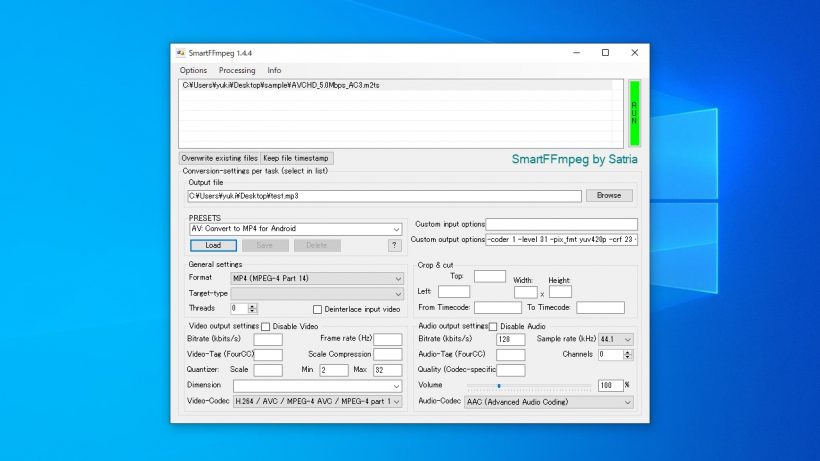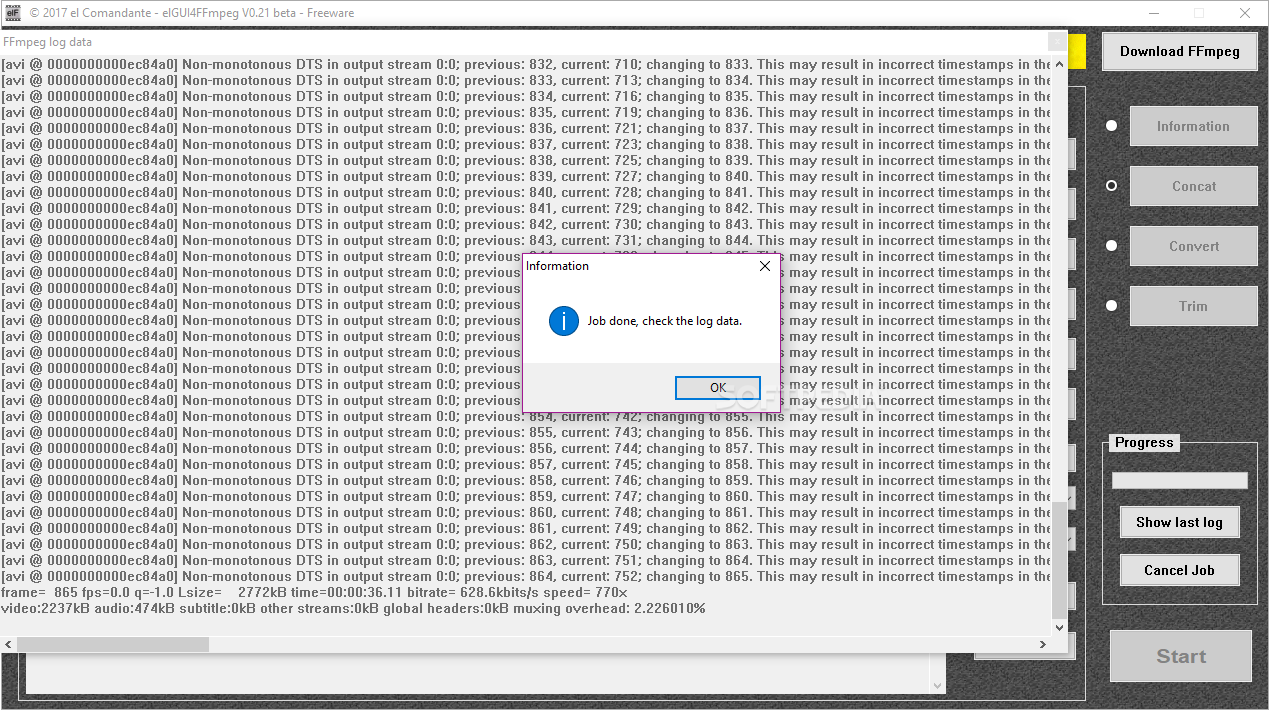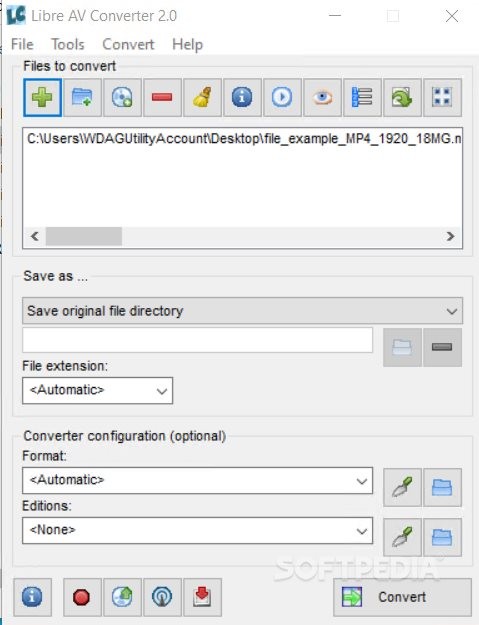

Works great and is fast, the slowest part is the initial import of the video file. You will have to import the file as Kino needs it in dv format (whatever that is) and you can then specify start and end point for each clip on the Edit tab, then export each clip individually on the Export tab. After trying to do this in the usual suspects all listed by others here I ended up using Kino.

I've struggled with this same issue, having a large video file that I want to cut and save as separate scenes. Select the file, then enter the time for start and end of the cut/crop Then it can be run with an app launcher like Synapse: Than create the file ~/.local/share/applications/sktop similar to: Ĭategories=GNOME GTK Settings HardwareSettings X-GNOME-Settings-Panel System
#Ffmpeg gui 2021 install
So, install yad, save the script as cut_audio-video.sh and make it executable. # Get 5 minutes of video starting at 2 minutes inĮcho "Example: $(basename - "$0") input.mp3 -5:00" >&2

Usageįfslice infile ]]] Examples # Get the last 5 minutes of an MP3 I wrote a helper for ffmpeg that mimics substr() syntax. Or avconv -ss 0 -i source.m4v -t 100 -vcodec copy -acodec copy part1.m4vĪvconv -ss 100 -i source.m4v -t 100 -vcodec copy -acodec copy part2.m4vĪvconv -ss 200 -i source.m4v -t 100 -vcodec copy -acodec copy part3.m4vĪvconv -ss 300 -i source.m4v -t 100 -vcodec copy -acodec copy part4.m4v Or ffmpeg -ss 0 -t 100 -i source.m4v -vcodec copy -acodec copy part1.m4vįfmpeg -ss 100 -t 100 -i source.m4v -vcodec copy -acodec copy part2.m4vįfmpeg -ss 200 -t 100 -i source.m4v -vcodec copy -acodec copy part3.m4vįfmpeg -ss 300 -t 100 -i source.m4v -vcodec copy -acodec copy part4.m4vĪVCONV avconv -i input.avi -vcodec copy -acodec copy -ss 00:00:00 -t 00:30:00 output1.aviĪvconv -i input.avi -vcodec copy -acodec copy -ss 00:30:00 -t 00:30:00 output2.aviĪvconv -i input.avi -vcodec copy -acodec copy -ss 01:00:00 -t 00:30:00 output3.avi For example:įFMPEG ffmpeg -ss 00:00:00 -t 00:30:00 -i input.avi -vcodec copy -acodec copy output1.aviįfmpeg -ss 00:30:00 -t 00:30:00 -i input.avi -vcodec copy -acodec copy output2.aviįfmpeg -ss 01:00:00 -t 00:30:00 -i input.avi -vcodec copy -acodec copy output3.avi I was going to mention commands like ffmpeg or avconv (The new one) which can OBVIOUSLY split files into groups.


 0 kommentar(er)
0 kommentar(er)
